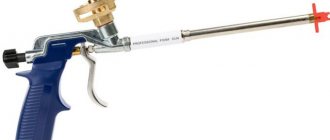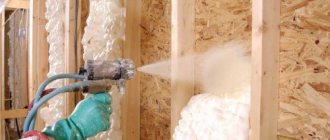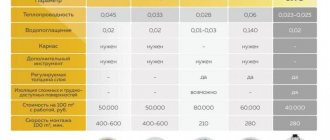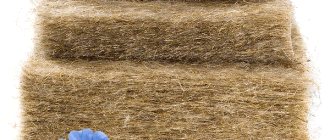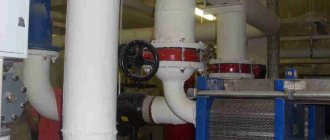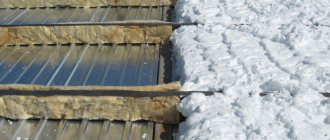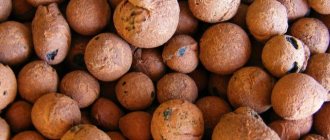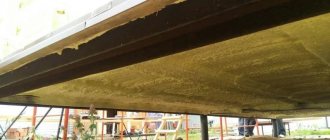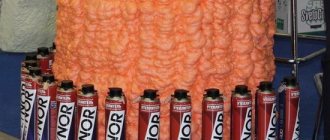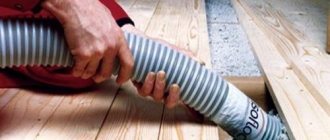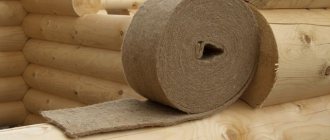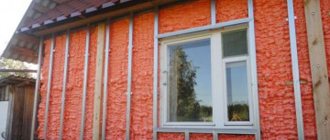Liquid foam foam Penomassa
TIS Channel Plant LLC
“Foam mass” is a liquid foam plastic that, with ordinary manual mixing in a bottle, after pouring the mixed liquid into a cavity or mold, increases in size by 10-12 times and acquires unique physical and mechanical properties. There are many types of foam plastics, this is ordinary foaming polystyrene foam in slabs and granules, extruded slab foam, but Penomassa is a special foam, it is liquid, which during the polymerization process increases 10-12 times and takes on the necessary shape with unique foam characteristics that are not inferior to conventional foams and even surpass them in many respects. The resulting material “Foam mass” has an orange color, high mechanical strength (withstands compressive strength loads of up to 33 tons per 1 sq.m.), low water absorption (almost does not absorb moisture), low thermal conductivity coefficient (lower than that of conventional granular PSB foam and approximately identical compared to extruded foam, such as penoplex, technoplex), greater adhesion (stickiness) to many materials, a high buoyancy index (does not sink), and most importantly, it can take any shape and completely fill all voids. Liquid foam "Penomassa » is produced according to Technical Specifications TU 2254-007-86901126-2015 in the city of Yekaterinburg on - intended for filling voids, cavities, thermal insulation, noise insulation, thermal insulation of building structures, making beehives, making sculptures, for filling voids in floating devices, construction joints structures, insulation of equipment and pipelines. The process of obtaining “Foam Mass” is very simple. One set of “Foam mass” contains two containers, one of which contains “foam”, and the other contains “mass”. To successfully use “Foam Mass”, both bottles must be preheated to a temperature of +20 - +25ºС. After that, you need to open the bottle with “FOAM” and pour it into the bottle with “MASS”, close the bottle with “MASS” with a lid and shake the resulting substance vigorously in the bottle for 20-25 seconds. Then open the bottle with the resulting composition and pour it into the cavity or mold to be filled. After you pour the material into the cavity to be filled, after 20 seconds the “Foam Mass” will begin to increase in size by 10-12 times and fill all available cavities. “Foam mass” hardens within 2-3 minutes after pouring. Foam mass has a closed-porous structure, which prevents the penetration of moisture and steam through the material.
Original link: https://www.youtube.com/watch?v=5bzfHiL5cx0
How to apply liquid foam yourself - step-by-step diagram
Step 1: Preparatory stage
There is no way around this step; before you start working directly with the insulation, you should prepare the surface to be treated. So, it doesn’t matter what it is: a brick wall, a metal or plastic pipe, or maybe even a wooden structure, in any case it should be cleaned of all contaminants, degreased and thoroughly moistened. Only after this can you proceed directly to thermal insulation.
Step 2: Preparing the insulation
Having lowered the balloon into water, we bring the liquid foam to the desired temperature (it is indicated in the attached instructions). Then, so that it foams well, you should vigorously shake the container at least 25 times, and, after removing the safety cap, screw on either the gun or the adapter tube. In any case, the container should be in the “bottom up” position. Please note that you can begin this step only after surface preparation is completely completed.
Step 3: Direct insulation
So, now we move on to the most important thing - applying the foam. This is done by simply pressing the corresponding lever, and the more effort is applied, the greater the amount of foam will come out, and vice versa, if you stop acting on the lever, the flow will stop altogether. In this way we process the given wall surface. After half an hour, you can trim off all the excess with a construction knife.
- Author: Mikhail Malofeev
Rate this article:
- 5
- 4
- 3
- 2
- 1
(3 votes, average: 2.3 out of 5)
Share with your friends!
The use of penoizol for home insulation
Penoizol is produced by foaming urea-formaldehyde resin and its further polymerization. The convenience of this material lies in the fact that it is produced directly on the job site. Penoizol is supplied under pressure in liquid form onto the insulated surface, filling it with itself. Insulation with penoizol not only significantly saves effort and time, but also has a fairly reasonable price. At the same time, money is not spent on loading and unloading operations, transport services, fastening materials, and no space is needed for storing insulation.
Scheme of roof insulation with foam insulation.
Differences and advantages of penoizol
- Penoizol differs from other materials in the peculiarity of its insulation work. The process is that a curtain façade is initially built, and then the cavity is filled with foam insulation under a steam-conducting membrane. This method can be used to insulate walls, attics, roofs and so on.
- Having low thermal conductivity, the material also has low bulk density. After drying, it has a fine-cell elastic structure and is absolutely odorless. Its air absorption is almost zero, it is not hygroscopic, fungal mold does not form on its surface, and mice do not eat this insulation.
- It is worth noting that you can work with penoizol only at a certain temperature; it should not be lower than 5°C.
- The material is environmentally friendly, for which manufacturers must have licenses and certificates. Penoizol is not only high-quality insulation, but also excellent sound insulation.
Insulation of houses with foam insulation
Wall insulation scheme.
To insulate a house, you will need a foam generator, with the help of which not only foam insulation is produced, but also it is directly poured or foamed. The technology for working with this insulation allows it to be poured almost anywhere. This material is very convenient because it can be used almost anywhere. They can:
- insulate loggias and balconies;
- fill the gap between the main wall and the drywall;
- pour under siding, wooden floors, panels;
- insulate the cavity of the internal and external walls.
It is very convenient to insulate ready-made, finished structures. For example, to fill voids in the walls it is not at all necessary to disassemble the structure; it is enough to drill several holes taking into account the diameter of the steam generator hose and fill the voids with foam insulation through them. In such cases, experts recommend filling from the bottom up.
For this job you will need very few materials and tools.
Liquid foam main characteristics and cost
Filled foam is in demand due to its high strength, the ability to be used in hard-to-reach areas, as well as its environmental friendliness and excellent thermal insulation qualities. This material is used for both external and internal wall insulation. This is due to the absence of any odor, which does not cause discomfort to the residents of the premises.
Features of liquid penoizol
Another contender for wall insulation is liquid penoizol. This material is capable of surpassing mineral wool and expanded polystyrene in its technical characteristics. The basis of the raw material is foamed and hardened urea resin.
Penoizol is included in the average price range on the building materials market, which is why it is so popular among wall insulation specialists. The use of raw materials has been echoed since the 30s of the last century, but then foam insulation insulation was not in demand due to its high cost. It is also possible to produce the material on the construction site.
Ceramic liquid insulation: what is it?
Another most popular representative of liquid insulation is the ceramic version. This material is considered the most popular due to its technical characteristics, but is often not used by people due to its high cost. Ceramic thermal insulation is attractive because it can be applied to brick, wood, and concrete structures. It is also successfully used on metal, drywall and plastic to increase their strength.
Liquid foam in cylinders as insulation
I have been producing liquid insulation for more than 10 years. I have a higher technical education and sufficient experience to help you insulate your house with your own hands, in a quick and relatively inexpensive way, or open your own business.
Through my own mistakes and experience, I became convinced of the truth of the classical sayings of two geniuses.
equipment for penoizol at least 5 times more expensive
even with microprocessor, computer control. But it must be with the official specifications for the penoizol brand. Otherwise, it may be a fake. Although the general technology is the same. Or, if you manage to find it on the Internet, which is unlikely, I’m not sure that with them you will immediately get all the necessary experience, which I offer you in a video training on self-production of equipment for the production of urea foam and detailed instructions on insulating houses with your own hands. You decide!
The price of a high-quality and reliable installation of a gas-burning unit and a quick-dismounting foam generator, made independently according to my video instructions
80% depends on the cost of the pumps. Russian or Chinese ones are cheaper, European ones are more expensive.
Practical instructions for insulating houses with foam insulation
Video of equipment operation and home insulation
Here there will be only practical information on how to insulate a house with any urea foam without consequences
Even when you officially order insulation of your home with foam insulation, it is important to understand for yourself how this is done correctly. After all, private houses and walls are different, the size of the layer, the strength of the masonry are different, and you need to immediately navigate and adapt to each house
I have heard questions on the phone many times... - Aren’t you going to destroy the house?! I have never destroyed a single house. Sometimes, it was necessary to carefully pour penoizol into walls that were swayed by hand. How to do it? Everything is in the video course.
More than 30 people from all over the CIS have already done GZHU and are insulating their houses according to my instructions!
Russia
: Moscow and St. Petersburg, in Bryansk, in Krasnodar, Voronezh, Stavropol, in Chelyabinsk, Samara, Novosibirsk, Perm, Omsk, Kirov, Ufa, in Rostov, Tyumen, in Belgorod, Barnaul, Armavir, Krasnoyarsk, in Ekaterinburg, Taganrog, in Nizhny Novgorod, Saratov, Izhevsk, Stary Oskol, Astrakhan, Tomsk, Kemerovo
Ukraine
: Kiev, Donetsk, Lugansk, Kharkov, Simferopol, Dnepropetrovsk, Vinnitsa, Zaporozhye, Krivoy Rog
Belarus
: Brest and Mogilev
Kazakhstan
: in Almaty and Kostanay
How to make urea liquid polystyrene foam penoizol with your own hands.
Description of liquid foam - penoizol.
Urea insulation is a foamed plastic consisting of 98% air and 2% urea-formaldehyde resin with approximately the same number of both open and closed pores. The structure of liquid foam is similar to the well-known soufflé type “Merringue”, and from a distance many people confuse it with expanded polystyrene (foam), but upon closer examination they recognize a completely different material from foam. Other names for insulation are mipore, liquid foam - penoizol, liquid insulation, urea foam, bipor and mettemplast.
Video: Appearance of liquid foam - penoizol and its mechanical properties.
Insulation with liquid foam plastic - penoizol.
— insulation of hollow walls: wooden frame houses, houses made of timber with insulation under the siding, hollow pockets in brickwork;
Video: Insulating the wall of a frame house with liquid foam - penoizol.
— insulation of floors, for example, if the house is on stilts with a ventilated underground;
— insulation of attics;
Video: Filling the floor and attic with liquid foam - penoizol.
- insulation of the attic roof;
— insulation of industrial refrigeration chambers and containers;
— insulation of industrial premises.
Production of urea liquid foam - penoizol.
It is quite simple to obtain liquid polystyrene foam - penoizol - it is a process consisting of several stages:
— Preparation of components: pouring resin and water into working containers, mixing the foaming agent and hardener with water, heating the water to 40 C;
— Filling the hydraulic system of the installation with resin and solution;
— Test pouring into a test container to control the quality of the insulation;
— Direct pouring of insulation into a building structure or mold.
Price for liquid polystyrene foam - penoizol.
The cost of raw materials for producing liquid foam - with 10th density at 2021 prices does not exceed 1000 rubles, even taking into account delivery.
Per cubic meter of 10-density
required:
15 l. resins*45 ruble liter = 675 rubles;
0.085 l. phosphoric acid * 120 rub/l = 10.2 rub;
0.170 l. foam concentrate ABSC * 160 rub/l = 27.2 rub.
Total: 712.4 rub/m3
Per cubic meter of 20-density liquid foam
required:
30 l. resins * 45 ruble liter = 1350 rubles;
0.085 l. phosphoric acid * 120 rub/l. = 10.2 rub;
0.170 l. ABSC foam concentrate * 160 rub/l. = 27.2 rub.
Total: 1387.4 rub/m3
One liter of resin contains 1.3 kg. The usual packaging is 200 liter barrels, approximately 260 kg per barrel.
One liter of phosphoric acid contains 1.75 kg. The usual packaging is 20 liter canisters, 35 kg each.
One liter of foaming agent ABSA contains 1.25 kg. The usual packaging is 20 liter canisters, 25 kg each.
For Siberia and the Far East:
LLC "Sibtem" Dealer, Nizhny Tagil
Novosibirsk, Prigranichnaya str. 3 (Pervomaisky district, Matveevka),
tel.8-913-923-30-72 Yuri Gennadievich
Supplies: Resin: Criterm, phosphoric acid, foaming agent ABSA
OJSC "UralKhimPlast"
Nizhny Tagil Northern Highway, 21. Supplied by: Criterm resin
Insulate a house with liquid foam: technological process
Strict adherence to the rules and regulations for the installation of sprayed polystyrene foam is the guarantee that the created thermal insulation layer will actually last the 70-80 years declared by the manufacturers. If the process of forming the foam material is disrupted, the dosage is incorrect, the coating is uneven, the use of cheap and low-quality raw materials - all this will cause the insulation to turn into dust, in the literal sense of this expression.
On the Internet you can find detailed instructions on how to insulate with liquid foam, video and photo reviews, tips and tricks.
However, it is much safer to turn to specially trained professionals. Those who have extensive experience in working with liquid foam plastics - contact the InnovaStroy masters. Moreover, if you decide to order the construction of a brick house, the construction of an aerated concrete cottage, a monolithic palace, or the construction of a turnkey combined house, the price of insulation work will already be included in the estimate documentation, and our specialists will carry out all the work efficiently and in compliance with the technological sequence:
1. Cleaning and preparing the surface from debris and third-party formations;
2. Spraying of material in accordance with calculated data and insulation design;
3. Ensuring normal crystallization;
4. External surface treatment in preparation for applying primers, paint, and internal finishing components.
One application of this type of material is a process in which liquid foam is delivered into the walls of a building - that is, into the cavities of finished structures to improve heat and sound insulation properties.
This method is used in cases where the cottage is already ready and needs to be improved - then the process looks a little different: 1. Drilling holes to access the space between the facing layer and the load-bearing walls; 2. Injection under pressure of foam material, which spreads clearly throughout volume, does not bulge, does not expand; 3. After shrinkage, the foam is re-installed; 4. Seal the holes with cement compounds or any other materials, in accordance with the appearance of the cottage. Insulating walls with liquid foam has become a very popular means of improving the thermal insulation of a building - there is no need removing the façade cladding reduces the volume of construction and installation work, and it is possible to ensure that even the most inaccessible places are filled. In any case of use, liquid polystyrene foam must be applied by professionals working on the basis of project documentation - this makes it much easier to avoid the undesirable consequences of using a new type of insulation. And the effect of its use is quite easy to see by conducting a thermal imaging examination of the structure after the polystyrene foam has finally hardened and acquired the desired shape. It is difficult to live in an age of innovation, which brings a doubling of information every decade - there is no stability! Things that were familiar yesterday, today or tomorrow may well become anachronism. Innovation in everything and everywhere, including in such a conservative industry as construction. New technologies, dozens of new finishing materials, fasteners and fittings, materials for walls and insulation.
Fundamentally new window systems, which have changed the idea that a window is a constant source of cold, can now partially serve as a heat insulator. New building materials, technologies or tools appear almost every day. Unfortunately, not everything worthy of use in construction is widely known. And the purpose of this article is to introduce you to a fairly little-known liquid insulation - penoizol (can also be called “Mipora”, “Unipor” or “Mettemplast”). So, penoizolPenoizol (aka urea foam) is obtained by foaming and subsequent polymerization of urea resin.
The uniqueness of this technology is that the production process takes place directly at the insulation facility, where the product in liquid form and under pressure is supplied into the insulated cavities, allowing them to be completely filled with insulation. It saves effort, time, and money on transport and loading and unloading operations. There is no need to take up space to store large volumes of insulation. There is no need to fasten the insulation to the wall and the associated work. The whole difference in the use of penoizol from conventional insulation is in the order of work.
If soft roll and solid sheet insulation is attached to the wall and only then covered (protected) with a vapor-conducting membrane with a suspended facade or plaster, then for insulation with liquid foam insulation, a curtain façade is first built and only then liquid insulation is poured into the cavity under the vapor-conducting membrane. Characteristics of urea foam As insulation , penoizol can have a density of 10 - 30 kg/m3 and has remarkable thermal insulation properties with thermal conductivity - 0.028-0.038 W/m² C. Compare, the thermal conductivity of classic foam plastic, depending on the density, varies in the range - 0.038 - 0.043 W/m ° C. Mineral wool boards with a density of 125 kg/m3 - 0.07 W/m² C (to prevent shrinkage of mineral wool during operation, a density of 120 kg/m3 and higher is recommended by manufacturers of mineral wool insulation for thermal insulation of vertical walls), and with a density of 200 kg/m3 - 0.08 W /m²C, i.e.
penoizol as an insulation retains heat better than polystyrene foam and, in this parameter, is twice as superior to mineral wool. Urea foam plastic, at one time, passed a number of tests and was repeatedly studied in various laboratories in our country and abroad. State certification services and licensing Gosstandart, State Committee for SEN, Gosstroy, after detailed studies for compliance with medical standards, certified urea foam. In addition, penoizol was tested for fire resistance at the State Enterprise TsNIISK named after. Kucherenko. The studies carried out confirmed the thermal conductivity coefficient in the range from 0.028 to 0.038 W/m² C. The fire safety of penoizol is also quite high, the material corresponds to a flammability group not lower than G-2.
Penoizol does not support combustion, which in itself is unique, given the organic basis of the material. When exposed to an open flame, penoizol gradually loses mass, charring and evaporating without the formation of melt drops, without emitting harmful gases or soot. It tolerates significant cyclic changes in temperature and humidity well and without changes in its structure. At the same time, it has enviable durability.
Laboratory studies gave an estimated service life of 60 - 80 years. At the same time, the Institute of Chemical Physics of the Russian Academy of Sciences, after studying penoizol for durability, wrote in conclusion that “the service life of penoizol is not limited.” This is confirmed by a study of samples of penoizol taken from walls insulated 60 - 70 years ago (the first experiments in using insulation). There were also no obvious signs of degradation.
The internal fine-mesh structure of the insulation effectively passes water vapor towards the lowest partial pressures. According to this indicator, penoizol corresponds to the best examples of insulation on the market.
This characteristic classifies it as a “vapor-permeable” insulation material, which is a prerequisite for insulating the walls and ceilings of a house. Application The microcapillary internal structure of penoizol, which is highly permeable to water vapor, actively pumps moisture from the walls to the outside through its volume, constantly drying them and preventing condensation from accumulating and the appearance of accompanying mold. Which is very valuable for any walls, especially wooden ones. A well-built and high-quality curtain wall with foam insulation as insulation guarantees a long life for a wooden house. Like most insulation materials, foam insulation is an excellent sound insulator.
Its five to seven centimeter layer reduces mid-frequency airborne noise by three times, structural noise (transmitted through structural elements) by two. Penoizol can be effectively used for insulation and sound insulation of walls, floor ceilings and internal bulkheads of houses built from almost any modern structural materials. The efficiency, low cost and fire safety of penoizol have made it attractive for insulating houses, as well as commercial and industrial buildings. Penoizol is an effective, if not the only, material for repairing the heat-insulating layer of a building damaged during operation. The material can be used, for example, to fill cavities formed as a result of poor-quality installation or shrinkage of mineral wool, filling cavities formed from expanded polystyrene (foam) destroyed by rodents, voids formed as a result of shrinkage of bulk insulation - expanded clay, ecowool, etc. Testing various insulation materials for airflow Pouring foam insulation into walls with settled mineral wool Disadvantages of penoizol. Like any other material, penoizol has advantages and disadvantages.
In the framework of this article, I will give the main ones: - penoizol has a rather low mechanical tensile strength, compared to extruded polystyrene foam, and it needs protection from mechanical influences. reducing the thermal insulation properties of insulation. But I note that, again, thanks to the capillary structure, it very quickly evaporates the accumulated moisture. - During the period of polymerization and drying, it releases a small amount of formaldehyde gas along with water, but after 2-3 weeks, when the material gets rid of moisture, this indicator does not exceed the maximum permissible concentration.- due to its hygroscopicity, penoizol cannot be used to insulate the underground part of foundations, and also cannot be used as insulation under a reinforced concrete screed. - in the case of pouring the material not into main walls (brick, concrete), but for example into a frame wall between two films, in Due to the impossibility of creating high pressure in a frame wall, penoizol has an unpleasant feature - shrinkage of the material during the drying process, which can reach 1%; in permanent walls, the shrinkage is leveled out by the high pressure created in the wall during pouring penoizol. To solve the problem of shrinkage of penoizol in light frame buildings, Armoplast company specialists have developed a set of measures: - technology for micro- and macro-reinforcement of penoizol using mineral additives and additional preparatory special measures, which allows you to completely get rid of the negative phenomena associated with shrinkage of the material in frame walls, ceilings, attics and guarantee reliable operation of the insulation in throughout its entire service life, rapid drying of the material is unacceptable, because
penoizol, during rapid drying, does not have time to polymerize sufficiently and gain sufficient strength, which leads to a high percentage of material shrinkage (penoizol must be located between the vapor barrier and windproof vapor-transparent membranes and dry within 2-4 weeks) - the mandatory use of the “correct” components, the so-called “foam-insulating” VPSG resin and Mettemplast technology. Below are pictures taken using an electron microscope (magnification 500x - 600x) showing the structure of conventional and micro-reinforced penoizol. Photo 1 Photo 2 Photo 1 shows an opened empty capillary of a unit cell (“bubble”) ordinary non-reinforced penoizol, photo 2 shows capillaries of reinforced penoizol filled with mineral fillers, which helps combat shrinkage phenomena during drying of the material, and also gives additional strength and fire resistance to penoizol. Thus, we see that penoizol has its own fairly wide range of applications , and many of the above-mentioned disadvantages of the material can be eliminated technologically. Aenoizol must be protected from external mechanical and climatic influences (this requirement is the same for almost all modern insulation materials). Penoizol in frame house construction and open fills must be reinforced, which will eliminate shrinkage of the material and obtain an excellent monolithic seamless heat-insulating layer bound throughout the entire volume with reinforcing mineral fibers. The effect of using penoizol to restore the thermal insulation of a brick house is perfectly demonstrated by a thermogram taken before (photo on the left) and after additional insulation was poured into the walls (photo on the right).
So, by choosing penoizol as the main insulation for the walls and ceilings of your home, you will receive an economical, reliable and durable material. A material that does not burn, “breathes” and does not harbor mice (a disadvantage of most modern insulation materials). - penoizol is cheap, using it, you save at the construction stage, but you will receive even greater savings during the operation of the house for heating, since this insulation has one of the best thermal resistance characteristics.
Penoizol is a combination of low price, good quality and high performance. Since penoizol in its original form is liquid foam poured under pressure, free volumes in walls of any configuration are completely filled. This eliminates their subsequent blowing and the associated heat and loss. - the material has a low price, therefore, using it, you will have the opportunity to increase the insulation layer in the house without additional financial costs, thereby automatically laying the foundations for its future energy efficiency. Based on the above, we can conclude : penoizol has both positive and negative properties. But for a specific, narrow use of the material - insulation of walls, floors and ceilings of a house, the advantages outweigh its disadvantages. A good thermal resistance coefficient, durability, affordable price and excellent performance properties make it one of the best insulation materials on the market.
Provided that the production technology of the material is followed, it can be recommended as insulation and sound insulator for walls, ceilings and partitions of almost any houses and structures. At the moment, there are quite a few different options for facing work. First of all, this concerns the insulation of the facade using special materials. Of all the huge variety, liquid foam is very popular. For example, it has been used abroad for more than 30 years and during all this time it has managed to prove itself from the best side.
Especially liquid polystyrene foam for insulating facades is popular in Germany, the Czech Republic, Switzerland, England, the USA and Denmark. Experts call liquid polystyrene foam for walls polystyrene foam, which is directly explained by its composition and scope of application. Liquid foam plastic can be used to insulate any building - both residential and public. It also makes absolutely no difference what they will be built from - brick, cinder block, concrete slabs, gypsum block and much more. It can also be used to insulate the foundations and basements of large country houses.
Liquid foam
At the same time, sprayed insulation materials are also known for their technological parameters that ensure practicality of use:
- The highest thermal conductivity indicator is observed for these materials, and is about 0.020-0.028 W/mS. In more modern insulation materials this figure is even lower - 0.017 W/mS
- Excellent sound insulation performance. This category of insulators successfully neutralizes even impact noise, ensuring silence in the room when working with construction tools
- The vapor permeability of sprayed heat insulators allows them to absorb moisture without creating comfortable conditions for the formation of condensation
- The use of this material allows you to insulate even hard-to-reach places due to its consistency
- The adhesion parameters inherent in this thermal insulation material make it possible to insulate surfaces made of any materials
Warning. Even with all the positive reviews about the adhesion of sprayed materials, their preliminary preparation should not be neglected. Smooth, oily, and surfaces made of polyethylene and other materials may poorly adhere to the insulation without degreasing, especially if the structure of the heat insulator is open-cell.
- The turnaround time for work with this insulation can also be called a record - to insulate 100-120 square meters, 8-9 hours are enough, with a low labor intensity of the process
- This is one of the few insulation materials that does not require hydro- and vapor barrier installation.
- The characteristics of spray-type insulation also include resistance to manifestations of biological and chemical origin.
Are you wondering what type of insulation is not chewed by mice? Another advantage of sprayed insulation is that it does not arouse interest among rodents, which have become a real problem when insulating with some other categories of insulation.
Technological features and material
One of the very comfortable and current types of heat preservation is insulation with liquid polystyrene foam. It shows good results, which is why it is now very popular.
The properties of liquid polystyrene foam make it possible to talk about its versatility and ease of use.
The scope of use of this material: roofs, walls, floors of residential premises. Liquid polystyrene foam differs in its low weight, low cost for its own consumption, and ease of installation.
The walls finished with it are insulated from noise, heat loss and steam. After liquid polystyrene foam, there is no need to finish the wall for vapor barrier.
If you look at other similar materials and compare, then 10 centimeters of liquid polystyrene foam is equivalent to 30 cm of simple polystyrene foam, about 20 cm of mineral wool, about 2.5 meters of brick or cement mortar.
Liquid polystyrene foam is a durable, completely environmentally friendly material. It meets all fire safety standards, does not emit toxic gases when melted, is not afraid of the influence of microorganisms, and prevents the emergence and spread of rodents in the house.
Without any restoration, already finished walls are insulated with liquid polystyrene foam. Material properties:
- Has high adhesion to a large number of materials used;
- Perfectly fills openings of various shapes, easily seals cracks;
- Low magnification rate – 1.5-2;
- Operating temperature – from -10? up to +30?;
- Hardens quickly after application;
- Serves for more than fifty years.
There are also bad qualities of liquid polystyrene foam. First of all, at first certain species will emit a bad odor, but over time it will disappear.
Second, liquid solutions prepared manually and applied without pressure can shrink in length by 5%.
Due to this, it is better to insulate houses with liquid polystyrene foam from specialized cylinders.
It is produced in special cylinder bottles with a valve (for connection to a repair gun) and as ordinary foam with a dispenser.
Scope of application of liquid urea foam
As already noted, the Liquid Penoplast material is absolutely universal. Today we can talk about successful application:
- For interior work (gluing light structures, thermal insulation of shower cabins, bathtubs (both tin and metal), sound insulation).
- For external work (facade work, waterproofing seams, body work, installation of concrete blocks (round) and a number of other areas).
The method of using foam insulation is quite simple. The surface is first cleaned of contaminants and moistened with water (except for situations where the process is carried out at temperatures below 0°C).
According to reviews of polystyrene foam in a liquid state, the optimal temperature is +20°C, but if it is lower, it is recommended to preheat the packaging using a container of warm water, but not higher than 50°C. During the hot season, excessively heated packages are also cooled using water.
We recommend that you read the reviews of people who have already tested liquid foam insulation in practice to make sure that its description and characteristics are correct.
Reviews
“Last year I encountered the problem of insulating a private house. I decided to take the advice of friends and use liquid foam. In principle, I was satisfied, but the unpleasant smell lingered in the premises for quite a long time, which is why after work my family and I had to move to my parents.”
Igor Rumyantsev, Chelyabinsk.
“Last fall I filled a private house with liquid foam. I decided to do the same as my neighbors, who highly praised this product. The price of Liquid Penoplast suited me. He didn’t take on the work himself; he hired a team of specialists. At the end of the work, I had to move in with friends, as the house smelled terribly of chemicals. Now there is no smell, and it has become warmer.”
Nikolay, Moscow.
“In June of this year I was renovating my apartment. Since I live on the 8th floor, the house is as cold as the North Pole. After reading reviews on the Internet, I decided to use Liquid Penoplast insulation in cylinders. In principle, I was satisfied, and only because the price was low. The disadvantages of liquid polystyrene foam are a strong pungent odor that did not dissipate for a long time; the mass came out of the container poorly (without pressure), which caused a lot of pain. Maybe the reason is that I purchased a low-quality product (counterfeit).”
Vasily, Yekaterinburg.
Where to use spray insulation
Due to compliance with safety standards, sprayed insulation can be used in public and residential buildings. The range of its application is quite universal:
- Roofing and attic structures
- Insulation of floors
- Insulation of wall surfaces
Objects can be classified as follows:
- Industrial buildings
- Outbuildings
- Refrigeration equipment
- Pipeline communications
- Vessels for technological purposes
Important to consider! Although spray-on insulation is considered environmentally friendly, thoughtful precautions must be taken when installing insulation in residential buildings. At the moment of application of the material, a polymerization reaction occurs, accompanied by a high degree of toxicity. And only after final hardening the risk of poisoning disappears completely.
And only after final hardening the risk of poisoning disappears completely.
As for the type of materials that can be used for insulation, there are no restrictions in this regard.
DIY spray insulation
Many owners of private houses, and even apartments, try to do all the work around the house with their own hands. But in this case, doing this without theoretical training and the necessary equipment is not easy.
In any case, for self-insulation with polyurethane foam you will need a balloon installation and the components necessary for this procedure, namely:
- Polyol, which must be mixed in a container with freon
- Isocyanate, also combined with Freon 134
Both cylinders must be inflated until the pressure in them reaches at least 8 atmospheres.
Next, spraying is carried out on the treated and prepared surface - just press the spray gun and direct a stream of insulation to the desired area.
Attention! When working independently with sprayed insulation, it is imperative to use personal protective equipment!
Sprayed insulation in cylinders
Since the independent process is not as complicated as its preparation, it will be easier to immediately resort to ready-made insulation kits in cylinders. In addition, there will be no noticeable difference in cost.
Sprayed insulation in cylinders is more practical, as it has been professionally prepared at the factory, including optimal pressure conditions.
Price for sprayed insulation
The cost of this insulation may seem slightly higher than materials in other categories. However, the economic efficiency of this thermal insulator is obvious when calculating, of course, the cost of other materials with the inclusion of additional equipment - profiles, sealants, fasteners and payment for the cost of professional work.
In the long term, the cost of insulation with sprayed insulation pays off by reducing energy costs.
Sprayed polyurethane insulation Polynor
An example of a successful choice of such insulation is Polynor insulation. Its advantages are evidenced by reviews of Polynor sprayed polyurethane insulation and instructions provided by the manufacturer in video format. The price for sprayed polyurethane insulation Polynor is identical to similar sprayed insulation in this category.
Thus, this type of thermal insulators is a priority in the choice of material for a number of technological indicators and for reasons of practical and budgetary value.
Description and characteristics
Polinor is produced in a liquid state and applied to the surface by spraying. This popularity of the material is not caused by chance, because it is characterized by the following advantages:
- Fast drying. The surface becomes hard after 1 hour.
- Unaffected by rodents and insects.
- Does not form cold bridges.
- Does not harm the human body.
- There is no need to buy expensive equipment for application.
- The material is characterized by high efficiency.
- Has a long service life.
- The structure of the material is closed cells that do not allow water or steam to pass through.
- The material is self-extinguishing if there is no direct influence of fire.
In the photo - liquid insulation in cylinders Polinor
Polinor is not without its disadvantages, which include:
- A surface made of Polinor is resistant to direct influence of UV rays and constant contact with water, and the process of applying the material must take place at a temperature of 15-25 degrees.
- When working with insulation, you must adhere to safety rules using a mask and respirator.
Compared to existing analogues of liquid thermal insulation for walls, Polinor insulation is significantly different. First of all, the changes concern the structure, or more precisely, the percentage of open and closed cells in the solid mass. This criterion is very important, as it affects the level of thermal conductivity, moisture absorption and water permeability. Using Polinor, you can get about 70% of the cells, while when using similar sprayed products, the number of closed-type cells will be only 30-40%. However, it cannot be used as a seal for interior doors.
On the video, liquid insulation in cylinders Polinor:
The material in question has the lowest thermal conductivity among all the insulation materials that are available on the domestic market today. For example, mineral wool has a thermal conductivity coefficient of 0.045, expanded polystyrene – 0.033, and Polinor – 0.023 W/m2* °C. Thanks to these properties of the heat insulator, it is possible to reduce its consumption. One cylinder will be enough to treat 1.2-2.0 m2.
Sprayed thermal insulator Polinor can be applied at temperatures from -25 to +125 °C. If it is exposed to a temperature of 450 degrees, then its length will be deformed by 85%, and damage by weight will be 50%. The duration of its independent combustion will be 5 minutes.
Polinor is an environmentally friendly insulation material, thanks to which it can be used when arranging a residential building. The material has high adhesive properties to various surfaces, resistance to moisture, chemicals and aggressive environments.
For those who want to learn more about what the characteristics of Izover insulation are, you should follow the link and read this information.
What density is best to use for roof insulation and how to choose it correctly is described in great detail in this article.
But which side to put the insulation with foil on and how easy it is to do is described in great detail in this article:
But what is the price of insulation for walls inside the house and how the price affects the dimensions is described in great detail in this article.
